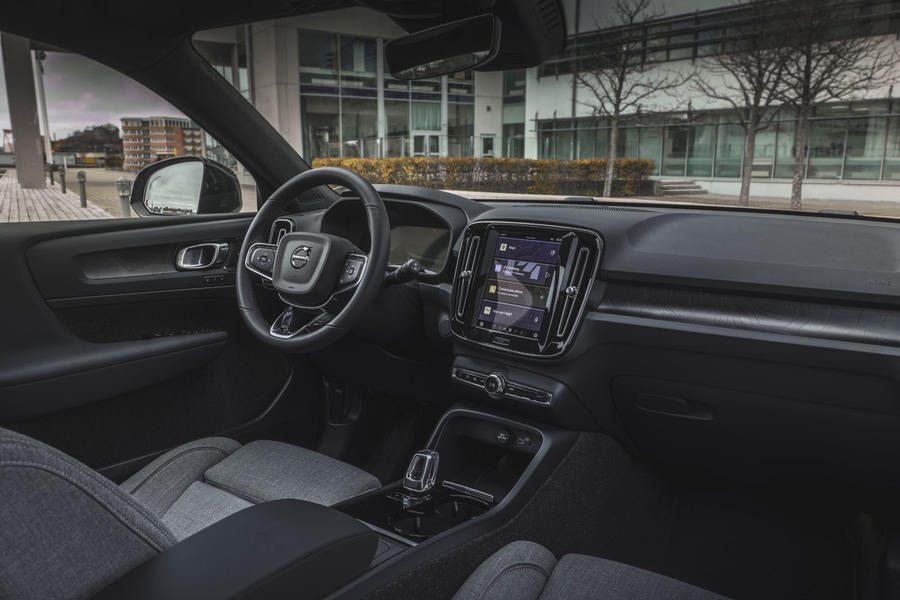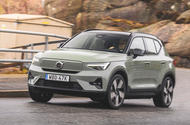Still not a class leader, but a longer range and faster charging were always going to be welcome
From a cursory glance of the spec sheet, you might not think the Volvo XC40 Recharge Twin has changed: it retains an electric motor on each axle, and an eye-popping combined output of 402bhp.
The difference is all in the details, and the use of two new motors results in a substantial change in how the powertrain works, all with a goal of boosting efficiency and, in turn, range.
Previously, the Twin layout featured identical 201bhp permanent magnet motors on each axle, so both were constantly in use when power was sent to them. The new version features a larger permanent magnet motor producing 254bhp on the rear axle, with a smaller asynchronous 148bhp motor on the front axle. That means the front motor only works when needed, so the car spends much of its time in rear-drive.
![]()
Both motors are new, and really reflect the relentless pace of electric car technology development. The new rear motor was first developed for the forthcoming Volvo EX90, where it will be featured on the front axle.
You’ll also see that new rear motor on the new Single Motor versions of the Volvo XC40 Recharge – and the closely related C40 Recharge coupe-SUV. You’ll see a similar switch elsewhere in the Geely empire too: the closely related Polestar 2 will also shortly get similar powertrain updates.
Volvo has switched in the new motors as part of a major push to boost efficiency. The unit is now entirely built in-house without the use of major third party components, which the firm says has packaging and performance benefits.
It’s enough to lift the efficiency to a claimed 3.5mpkWh, up from 3.0mpkwh. Twin models also get an 82kWh (79kWh usable) battery, up from the previous 78 (75kWh net) version. Overall, that lifts the range from 270 to 334 miles. And thanks to a new cooling system and other upgrades, it can charge faster too, with a peak of 200kW up from 150kW previously.
What the updated engine doesn’t add is any extra dynamic prowess when behind the wheel. It’s still ridiculously fast and powerful for a Volvo crossover, but the driving dynamics remain determinedly unremarkable.
Which is probably a good thing for a Volvo crossover. This isn’t the sort of car you approach expecting excitement. It’s all thoroughly smooth and pleasant, and in combination with the premium-feeling interior makes the XC40 a pleasant place to spend long journeys.
Because this ‘lifecycle update’ is focused purely on powertrain developments, the exterior and interior styling of the XC40 Recharge remains unchanged since the last facelift. No shame there, given the premium feeling interior feel is a real selling point for the model.

The XC40 Recharge still has an excess of power for a Volvo – but plenty of appeal to those seeking a premium EV crossover. The extra range and faster charging give reasons to consider this Twin version over single motor models, and bring it in line with key rivals then. A useful, rather than transformative, update then.

Source: Autocar
